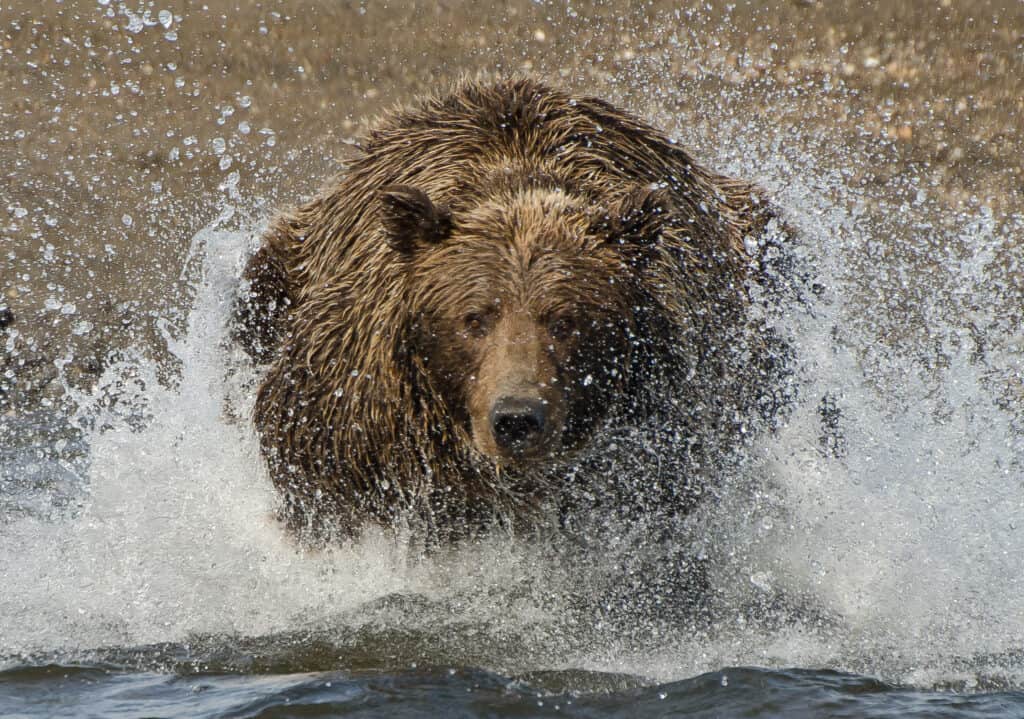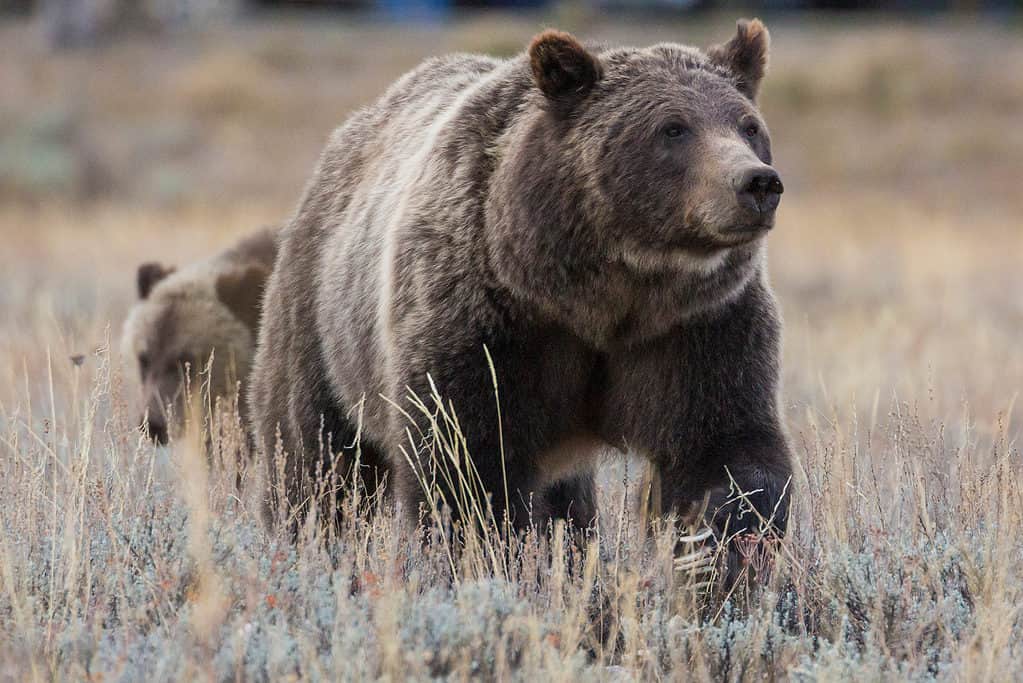Continue reading for our analysis...

Bears have a number of strategies that they use to hunt prey – and being sneaky is one of them. Luck also comes into it. This video was filmed at the Denali National Park in Alaska, but the camera is quite some distance away, so sometimes you have to concentrate hard to spot the animals. The bear seems pretty relaxed, and at the start of the footage, it is strolling on a mountainside, across a stream, and even stops to scratch its back. On the opposite mountainside, there is a female moose with two calves.
The Hunt Is On – Or Is It?

Bears target moose calves because they are easier to catch
©Ghost Bear/Shutterstock.com
This bear seems to have the good fortune to have dinner, literally walking right up to it rather than launching a strenuous hunt. The grizzly is partially hidden by some trees, and clearly, the moose family has not spotted it at all because they all walk right up to it. The bear, however, has seen them and stays absolutely still whilst a meal delivers itself.

Grizzly Bears will target moose calves more often than adults
©David Rasmus/Shutterstock.com
The inevitable happens. The moose suddenly starts to run away, and, at first, the bear runs after the mother. However, the clever predator soon changes its mind and switches attention to one of the calves. This is a much better strategy for a hungry bear. The meal may not be as large, but the chances of success are much higher. The risk of injury (from a hefty kick) is also less. The poor mother can only turn around and watch as her calf is devoured.
What Do Grizzly Bears Normally Eat?

Grizzly bears spend a lot of time hunting for food. They are native to North America and live in forests and mountainous regions. Grizzles are large animals, growing up to 800 or even 900 pounds, and they need a lot of food to support that huge body -up to 90 pounds a day. So, what do they eat?
You may be surprised to learn that grizzly bears are omnivores and don’t actually eat only meat. They feast on berries, grasses, and roots. Their animal protein is derived from fish, insects, and mice. However, they are also prepared to put the effort in and catch a moose calf to get a bigger meal. Grizzlies also kill adult moose, mainly in the spring.
Where do Grizzlies Live?

These large brown bears once roamed throughout the entire western United States into Mexico.
©BlueBarronPhoto/Shutterstock.com
Grizzly bears are considered threatened after being excessively overhunted, leaving less than 1,500 in the United States, plus 31,000 in the state of Alaska. These large brown bears once roamed throughout the entire western United States into Mexico. Now, 98% of their native habitat is no longer home to them. There are populations of grizzlies in the Northern Rocky Mountains, including Yellowstone and Glacier National Parks, and in northwestern Montana and extreme northern Idaho next to Canada. Most grizzlies in the United States live in Alaska. Thanks to conservation efforts – grizzly bears are recovering well in Yellowstone and the Northern Rockies and are beginning to increase their numbers in Montana.
Thank you for reading! Have some feedback for us? Contact the AZ Animals editorial team.






